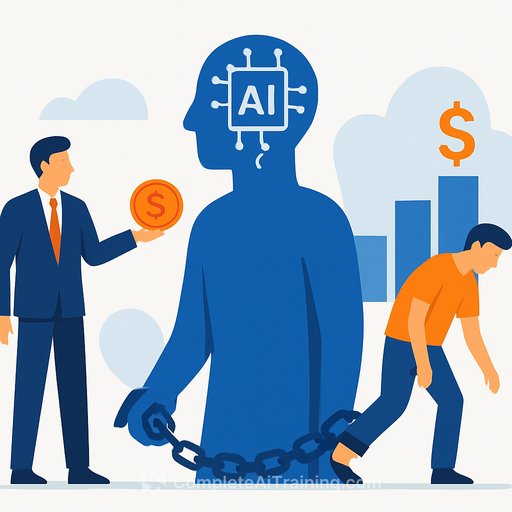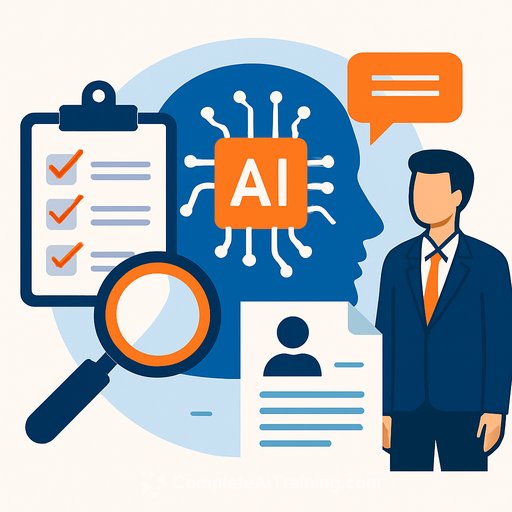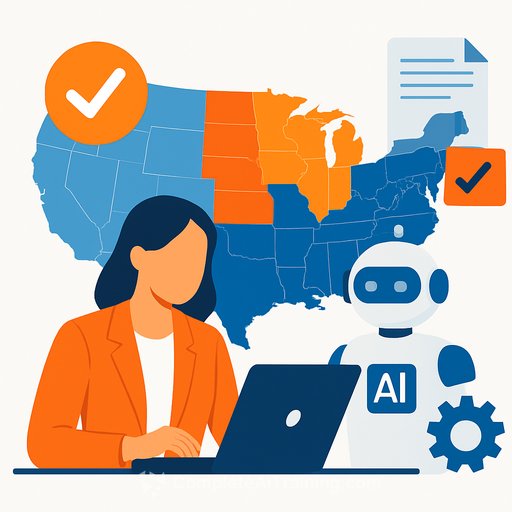Stop Trading People for Short-Term AI ROI
Cutting jobs for AI might boost profits today, but skipping reskilling will cost organizations the future they actually want. Many leadership teams are celebrating efficiency gains and headcount cuts. The stock pops, the press calls it "optimization," and the board nods.
Here's the part HR will deal with: an average of 491 people lost their jobs to AI every day as of June, and 55% of companies that cut staff due to automation now regret it. Meanwhile, 41% of employers plan to reduce headcount over the next five years because of AI. That is a recipe for skills gaps, stalled pipelines, and long-term talent debt.
The Hidden Cost HR Will Inherit
Automating roles without reskilling isn't efficiency. It's short-sighted. It shifts costs to society and to your future hiring budget. Entry-level roles are shrinking, the average age in tech is rising, and the bottom rung of the ladder is disappearing.
Every junior developer replaced by code assistants, every agent replaced by a chatbot, every analyst automated away is a future senior leader that never gets built. Leaders already know close to half the workforce needs reskilling in the next three years. We're just not funding the transition at the pace we're automating.
Treat Training as the Other Half of Automation
AI isn't here to replace people. It amplifies people. But amplification only works if people have the skills. If you chase short-term gains and cut learning, you're building human capital technical debt. Like all debt, it comes due-with interest.
HR's message to the C-suite should be simple: pair automation with education, or expect churn, slowed adoption, and rising rehiring costs later.
A Practical HR Playbook
1) Match Automation with Education
For every dollar invested in AI tooling, invest a dollar in reskilling and role transition. Not workshops. Real pathways into higher-value work.
- Set a 1:1 tooling-to-training budget ratio for AI programs.
- Tie automation business cases to funded learning paths and redeployment plans.
- Build skills-based job architectures so employees can see clear steps from today's role to tomorrow's role.
- Stand up a redeployment "control tower" to place at-risk employees into internal projects within 60 days.
2) Use AI to Close AI Skill Gaps
The tech causing disruption can accelerate learning. Use it.
- Personalized learning plans powered by generative AI; add hands-on labs, hackathons, and simulations to make skills stick.
- Mandate "show the work" projects: every learner delivers a real workflow, prompt library, or automation to production.
- Give managers playbooks and time budgets to coach-not just sign off on courses.
- Curate role-based catalogs for HR, TA, Operations, Finance, and frontline leaders. If it's not role-relevant, it won't land.
Need role-based paths fast? See curated options by job and skill at Complete AI Training and credential plans at Popular Certifications.
3) Create Pathways, Not Dead Ends
When a role is automated, have the destination ready before the announcement.
- Publish internal mobility pathways: Customer Service → CX Analyst → Automation Ops; QA → Data Quality → Model Monitoring; HR Coordinator → People Analytics → AI Policy.
- Guarantee interview rights for redeploying employees and waive tenure requirements for posted roles.
- Offer bridge roles (6-12 months) that blend old and new tasks while skills ramp.
- Pair severance with funded reskilling stipends and job placement support when redeployment isn't feasible.
4) Be Honest About the Timeline
Entry-level postings have dropped. If a role is sunsetting, say so early. Transparency buys time and trust.
- Communicate 6-12 months ahead of change with a clear skills plan, not just talking points.
- Provide protected learning hours (2-4 hours/week) and track usage as a leading indicator.
- Publish quarterly "roles at risk" and "roles in demand" lists so employees can move by choice, not by surprise.
What to Tell Your Board
Short-term cost saves are easy. Sustainable transformation is the real win. Position reskilling as a risk hedge and an adoption accelerator.
- Proposed guardrails: 1:1 AI-tooling-to-training spend; 70% internal redeployment target for at-risk roles; 80% program completion with verified skill artifacts.
- Adoption metrics: time-to-productivity with AI, usage depth by role, error rates, and quality lift scores.
- Risk metrics: regretted attrition, unfilled critical roles, brand/reputation risk, regulatory audit readiness for AI use.
Metrics That Matter
- Internal fill rate for new AI-augmented roles.
- Training participation and completion tied to job-relevant projects.
- Time-to-proficiency post-training (measured by real work outcomes, not quiz scores).
- Unit-cost-to-serve after AI plus training (not just after AI).
- Employee trust and change-readiness scores before and after announcements.
Use the Window of Trust
Employees still expect employers to act ethically with AI. That trust won't last forever. Use it to do this right.
90-Day Action Plan
- Weeks 1-2: Freeze AI-related role cuts. Map roles at risk. Launch a skills inventory and define target roles.
- Weeks 3-4: Publish pathways per role family. Stand up a redeployment desk and internal gigs marketplace.
- Weeks 5-8: Launch role-based AI learning paths with labs and coaching. Protect learning hours on calendars.
- Weeks 9-12: Move first cohort into bridge roles. Report adoption, quality lift, and redeployment rates to the board.
The Bottom Line for HR
Before the next automation push, ask one question: What is our plan for our people? If there isn't a credible answer-funded training, real pathways, and clear timelines-pause the deployment.
Get this right and AI becomes a way to build better work, stronger pipelines, and a healthier employer brand. Get it wrong and you'll pay for years in churn, hiring premiums, and stalled adoption. The choice is on the table. Choose wisely.
Your membership also unlocks:






